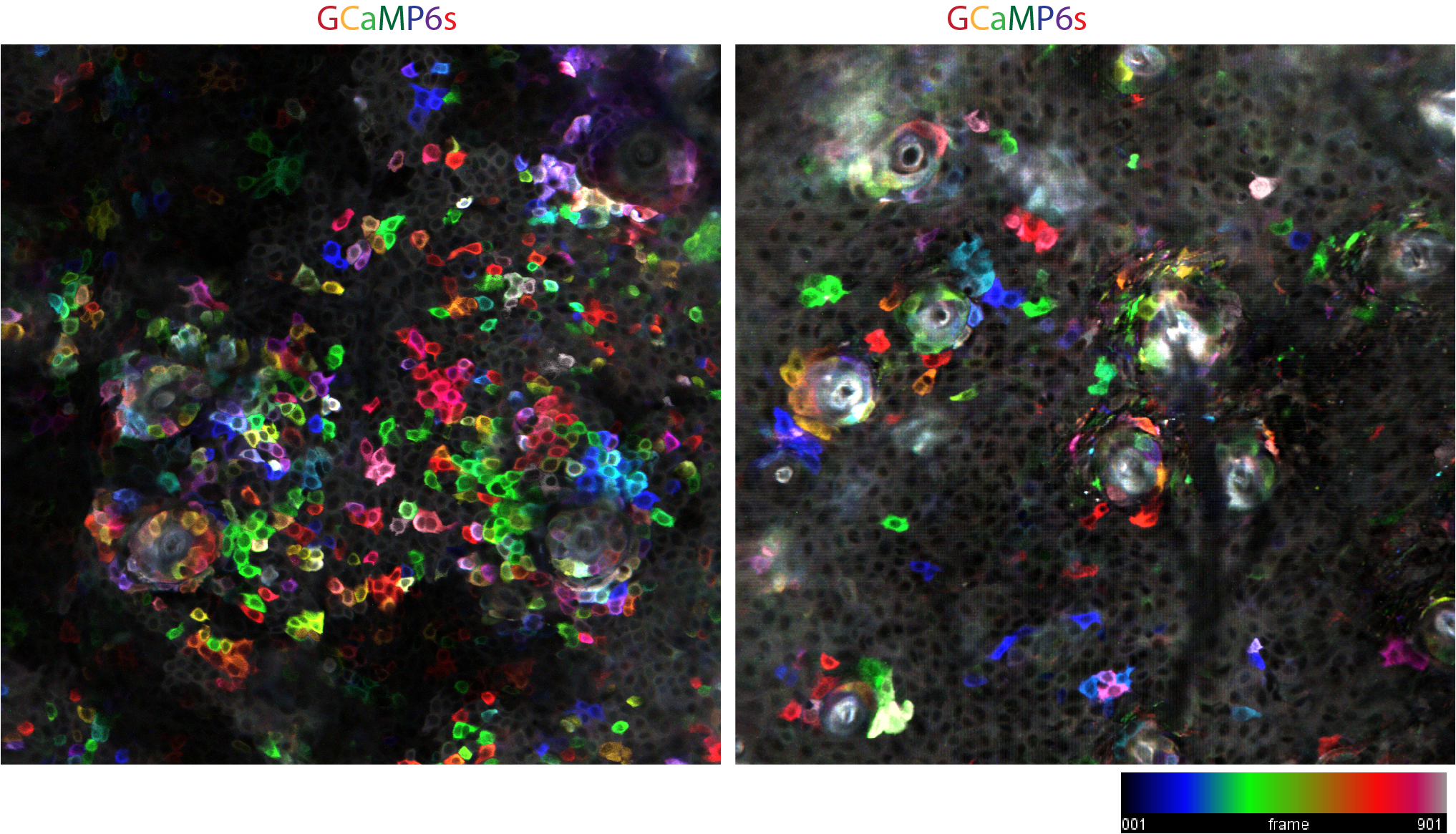
Homeostasis
Tissue regeneration is an extremely dynamic process, requiring coordination of many cellular behaviors by multiple cell types – including stem cells and their supporting niches – to maintain normal tissue function. By investigating homeostatic principles that maintain different tissue types within an organ, we are uncovering how different tissue types contribute to overall organ function.
Using our novel live imaging approach, we have begun to understand what factors dictate stem cell behaviors in the skin, including that:
1) stem cells are spatially primed for specific differentiation paths, but can switch their fates to adopt new functions (Rompolas 2013; Xin 2018)
2) epidermal stem cells are equipotent for self-renewal and differentiation behaviors (Rompolas* & Mesa* 2016)
3) gene expression and chromatin architecture heterogeneity among stem cells reflects a gradual and to some extent flexible differentiation process (Cockburn 2022; May* & Yun* 2023)
Recently, we have been investigating stem cell coordination on a population level and locally among direct neighbors. By developing a method to track every epidermal stem cell in a large area over multiple days, we showed that the exit of a stem cell from the basal layer (typically due to differentiation) is not only balanced by, but also causes the counterbalancing division of a neighboring stem cell (Mesa*, Kawaguchi* & Cockburn* 2018 ; May* & Yun* 2023).
Representative images showing the segmentation of basal cells based on the cortical K14-actinGFP signal. Representative example of an individual basal cell increasing in area concurrent with a neighbor differentiation, losing the G1 reporter (mKO2-hCdt1(30/120)) signal, and dividing over the course of 48 hr.
We further discovered highly coordinated calcium signaling within the epidermal stem cell layer, and this calcium signaling drives cell cycle progression (Moore*, Bhaskar* & Gao* 2023).
Representative max intensity projection of 30-min recording of the basal layer of control and G2-depleted Ca2+-sensor mice. Color scale indicates GCaMP6s signal across time.
We have also begun investigating other cell types in the skin. Unlike epithelial stem cells, endothelial cells and fibroblasts in the dermis do not appear to rely on proliferation to maintain homeostasis. We recently showed that a fixed number of neonatal endothelial cells rearrange their positions as the vascular plexus develops, eventually becoming positionally stable in adulthood (Kam 2023).
We also discovered that fibroblasts are remarkably positionally stable in the adult skin, in contrast to being highly dynamic in vitro (Marsh 2018), and in our ongoing work we are studying how their organization and functions as niche components to epidermal stem cells evolve and mature during postnatal development.
Timelapse movie of a single membrane-GFP labeled fibroblast in undamaged live mouse paw skin upper dermis.



